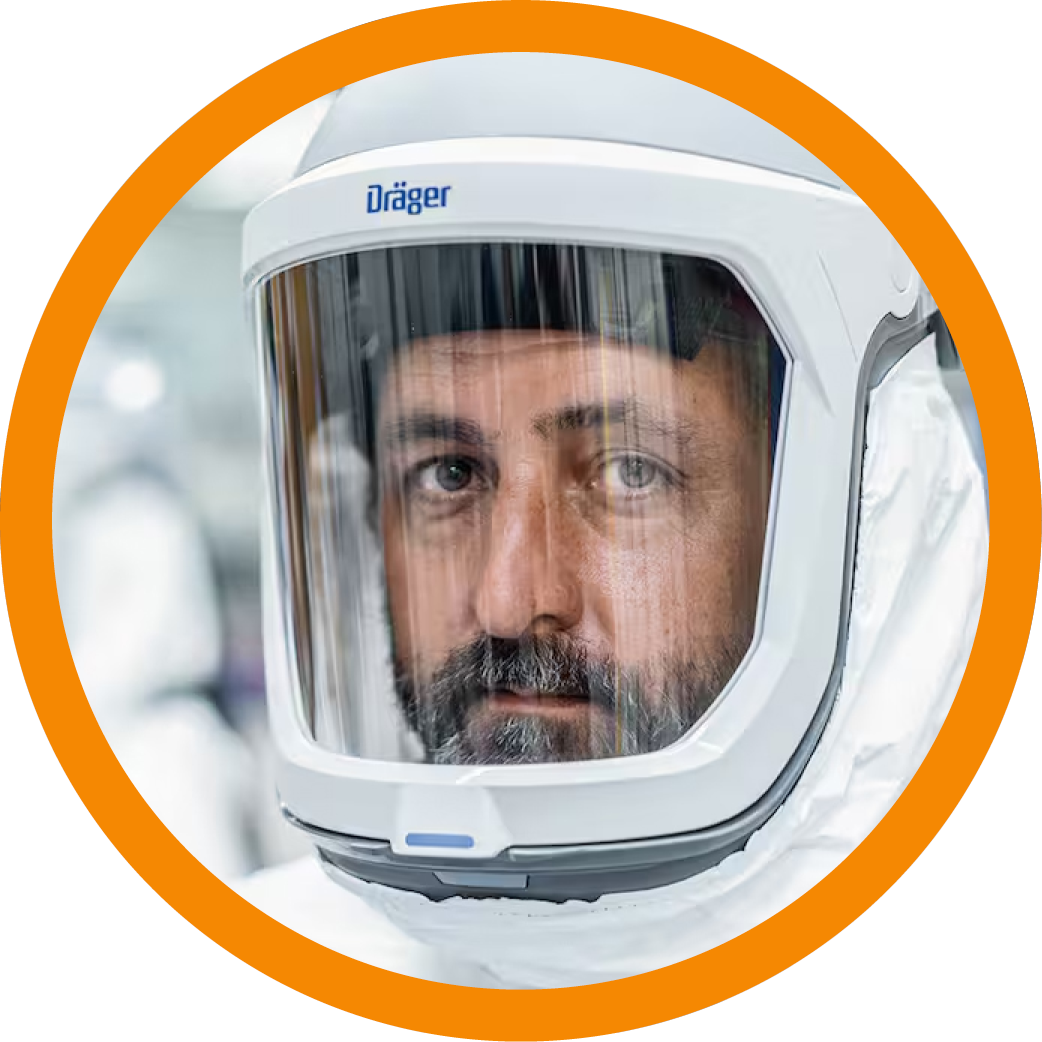
| Facial Hair and Markings Beards, stubble, cuts, scars wrinkles and piercings can all affect the tight seal of face masks to the face. Loose fitting head pieces such as hoods or helmets, available with PAPR options such as the Drager X-Plore 8000, or the PureFlo range are the answer here as they don’t require a tight seal. |
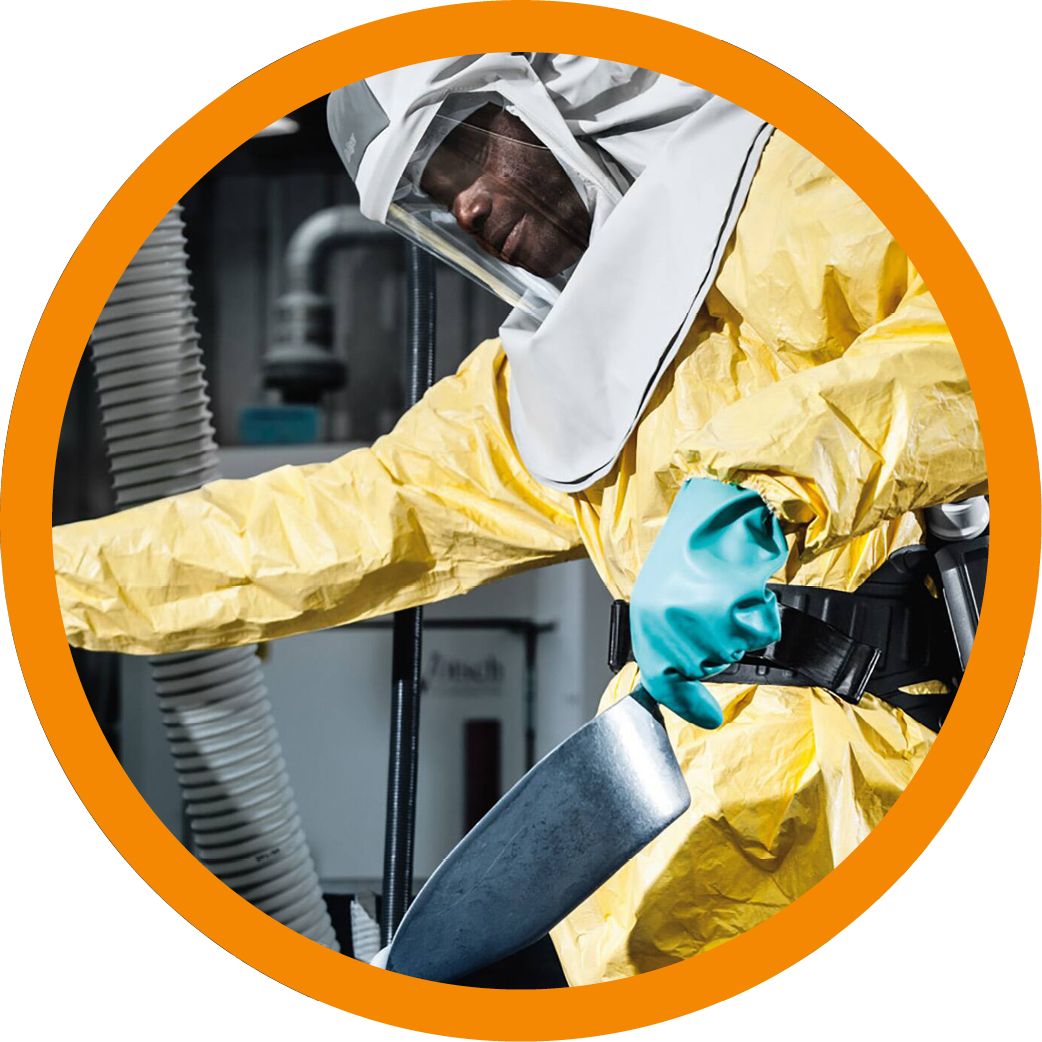
| Different Facial DimensionsDifferent face sizes and shapes can make a good fit and tight seal challenging. Choose RPE masks that are available in different sizes, or to avoid issues with face fitting, choose PAPR solutions which contain features that enable fitting and are designed to accommodate movement. |
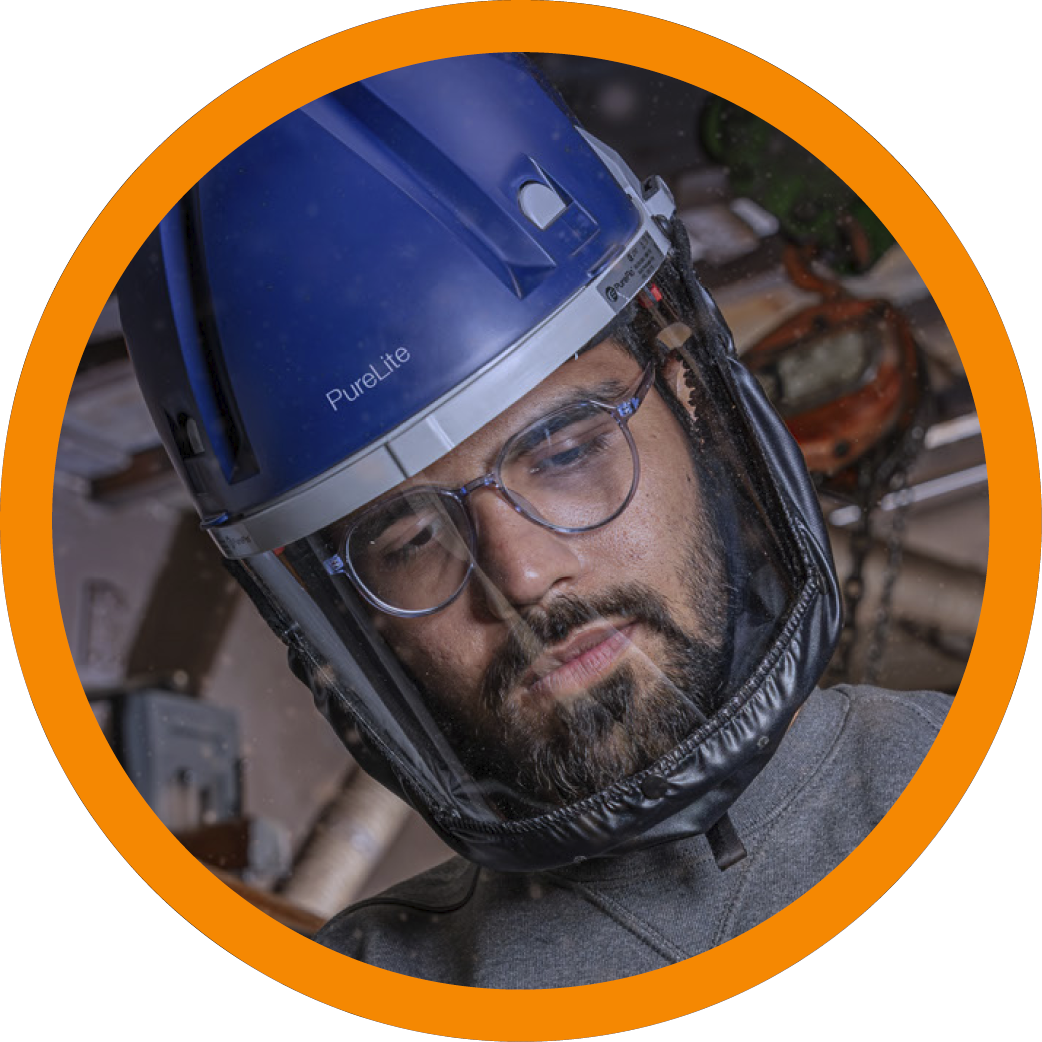
| Corrective EyewearFull & half tight fitting masks must be fit-tested with both corrective & protective eyewear in place. Full face masks can’t be worn with corrective spectacles as their arms compromise the seal. To avoid this issue, use PAPR headpieces that can accommodate specs or can feature integral face and eye protection. |

| Compatibility with other PPEIf other head worn PPE such as safety helmets, face, eye and hearing protection is needed, this may interfere with the RPE mask being worn. Instead, choose RPE with combined or ‘integrated’ protection such as head protection, visors, and earmuffs. |
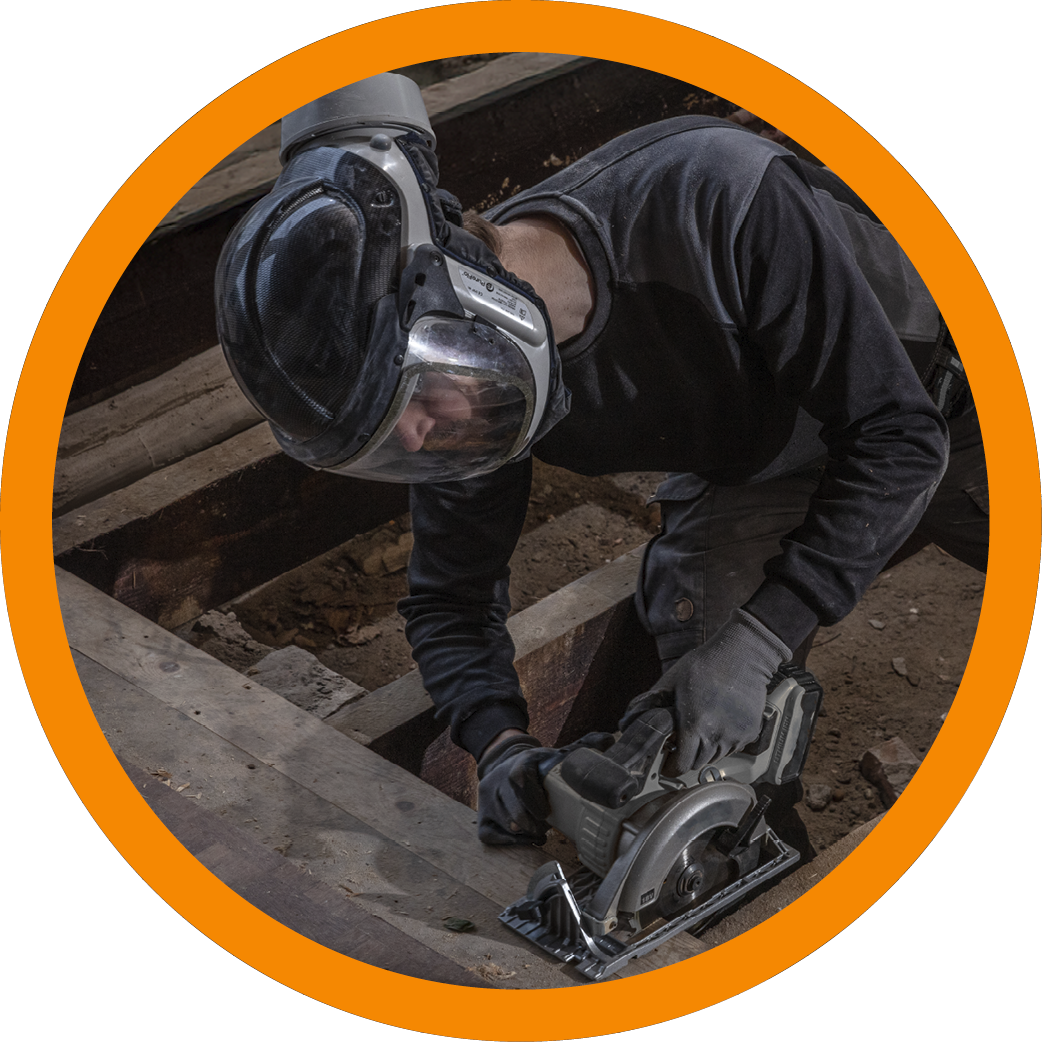
| Higher Levels of Physical ActivityHigher work rates can lead to increased breathing rates and sweating which may cause facepieces to slip and potentially leak. For medium to high work rates powered air or breathing apparatus could be safer and more comfortable. |
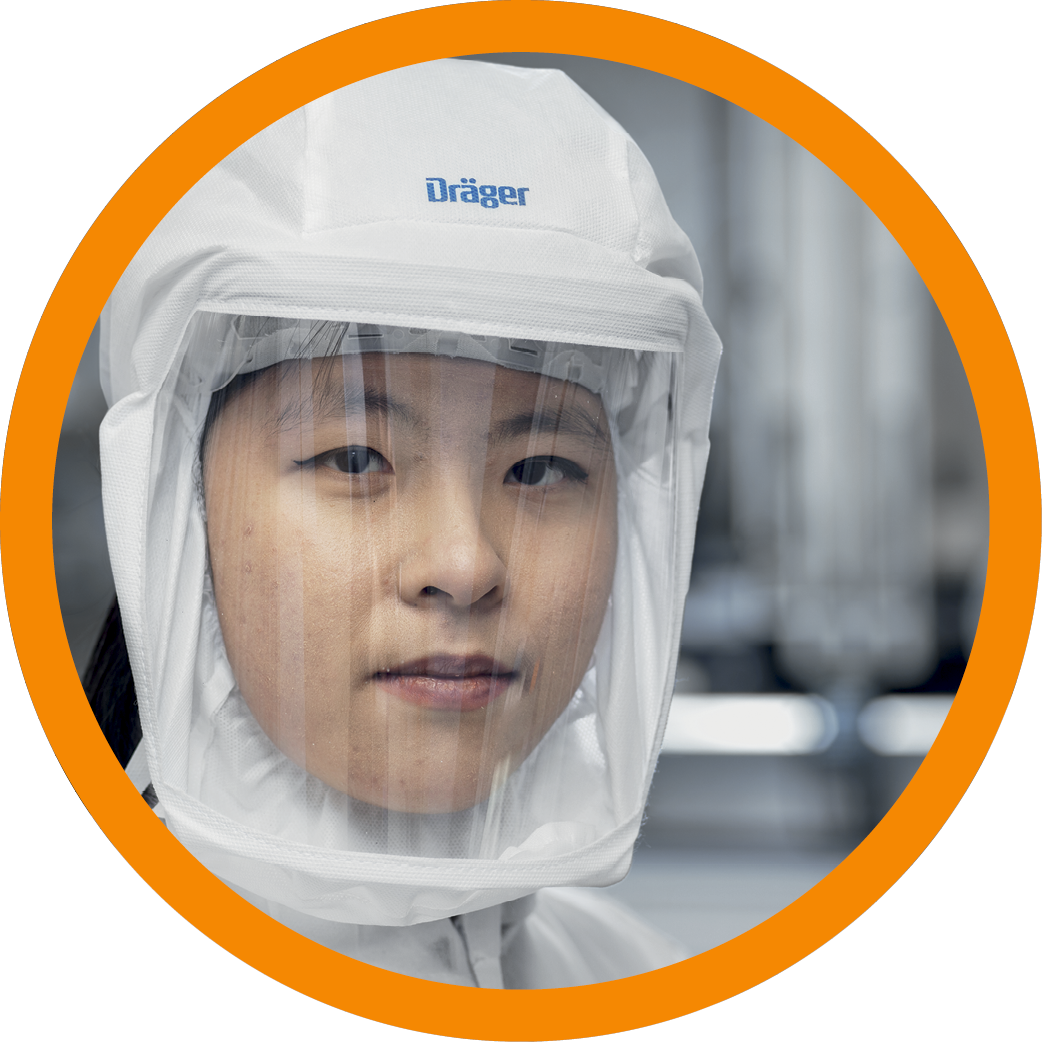
| Over 1-Hour Continuous UseThe HSE advise continuous wear time for unpowered, tight-fitting RPE of less than 1 hour, as masks can become uncomfortable and removed or loosened. Powered air or airline respirators are recommended for longer periods. |
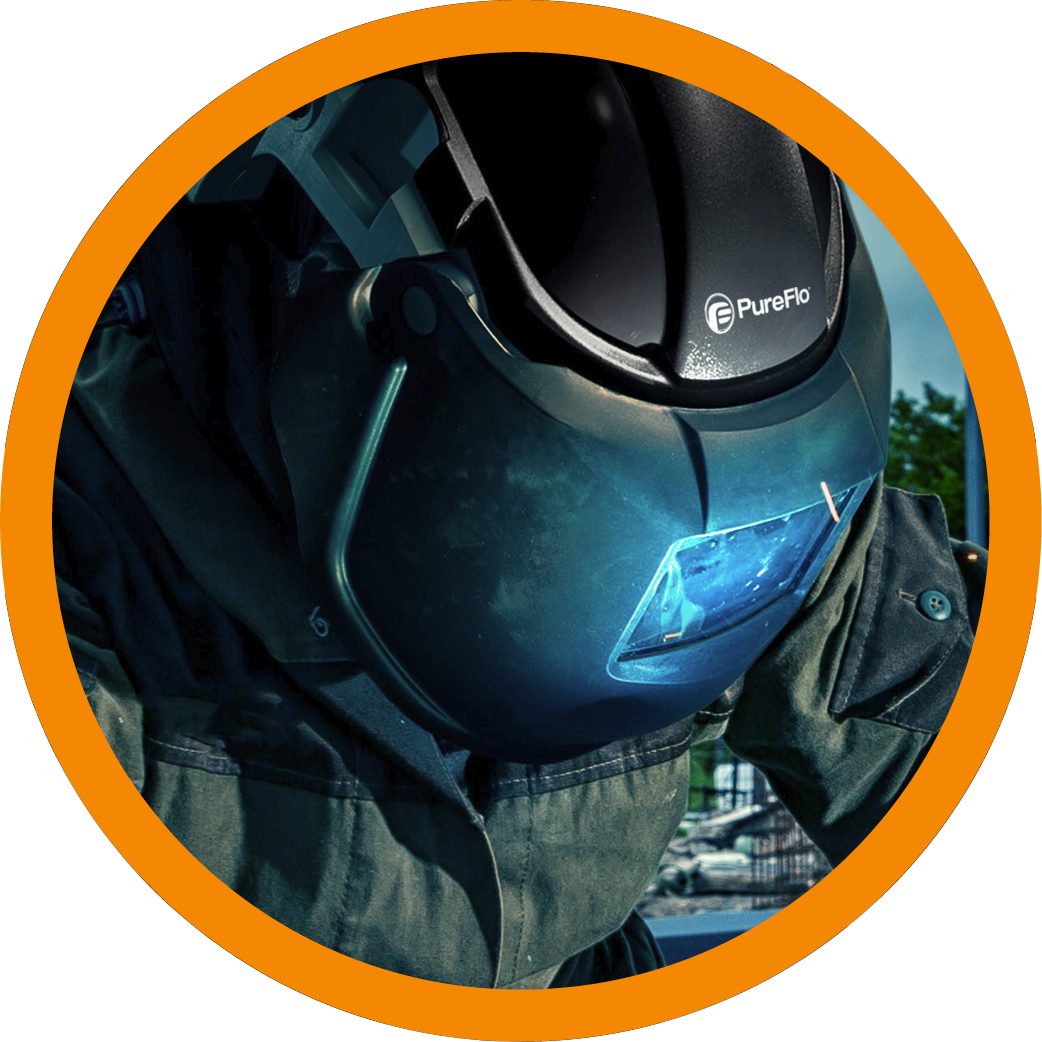
| Abnormal Temperatures/HumidityIn environments that are hot and/or humid, wearing RPE can contribute to increased sweating, heat stress and discomfort. Powered respirators that supply filtered, cold air through a loose fitting headpiece could improve comfort. |

| Explosive AtmospheresFlammable or combustible gases, vapours or dusts can lead to potentially explosive atmospheres where some RPE could pose an ignition risk. Intrinsically safe powered air units with anti-static components may be a solution. |